Matthew S. Williams's Blog, page 38
August 27, 2014
News from Space: Dream Chaser Airframe Unveiled
 With the cancellation of the Space Shuttle program, and the termination of NASA’s operations with the Russian Federal Space Agency (Roscosmos), NASA has been pushing ahead with several programs designed to restore their access to low Earth orbit and the International Space Station (ISS). One such program is the Dream Chaser, a joint venture between the Sierra Nevada Corporation and Lockheed Martin that aims to create a winged mini-shuttle.
With the cancellation of the Space Shuttle program, and the termination of NASA’s operations with the Russian Federal Space Agency (Roscosmos), NASA has been pushing ahead with several programs designed to restore their access to low Earth orbit and the International Space Station (ISS). One such program is the Dream Chaser, a joint venture between the Sierra Nevada Corporation and Lockheed Martin that aims to create a winged mini-shuttle.
Earlier this month, the program reached an important milestone when the composite airframe structure was unveiled at a joint press conference by Sierra Nevada Corporation and Lockheed Martin at the Fort Worth facility. The assembly of the airframe took place at NASA’s Michoud Assembly Facility (MAF) in New Orleans, where Lockheed Martin is busy fabricating the structural components for the composite structure.
 From here, the completed components are shipped to Lockheed Martin’s Aeronautics facility in Fort Worth, Texas for integration into the airframe and assembly. Designed to be launched into orbit atop a United Launch Alliance (ULA) Atlas V rocket and then fly back and land on its power, the Dream Chaser will carry a mix of cargo and up to a seven crewmembers to the ISS before landing on commercial runways anywhere in the world.
From here, the completed components are shipped to Lockheed Martin’s Aeronautics facility in Fort Worth, Texas for integration into the airframe and assembly. Designed to be launched into orbit atop a United Launch Alliance (ULA) Atlas V rocket and then fly back and land on its power, the Dream Chaser will carry a mix of cargo and up to a seven crewmembers to the ISS before landing on commercial runways anywhere in the world.
According to Mark N. Sirangelo, corporate vice president of Sierra Nevada’s Space Systems, the company chose to partner with Lockheed Martin because of its long history in the development of commercial aerospace technology:
As a valued strategic partner on SNC’s Dream Chaser Dream Team, Lockheed Martin is under contract to manufacture Dream Chaser orbital structure airframes… We competitively chose Lockheed Martin because they are a world leader in composite manufacturing, have the infrastructure, resources and quality control needed to support the needs of an orbital vehicle and have a proven track record of leading our nation’s top aviation and aerospace programs. Lockheed Martin’s diverse heritage coupled with their current work on the Orion program adds an extra element of depth and expertise to our program. SNC and Lockheed Martin continue to expand and develop a strong multi-faceted relationship.
 Dream Chaser measures about 9 meters (29 feet) long with a 7 meter (23 foot) wide wing span, and is about one third the size of the Space Shuttle Endeavor and all other NASA orbiters – which were retired beginning in 2011. Upon completion of the airframe manufacturing at Ft Worth, it will be transported to SNC’s Louisville, Colorado, facility for final integration and assembly.
Dream Chaser measures about 9 meters (29 feet) long with a 7 meter (23 foot) wide wing span, and is about one third the size of the Space Shuttle Endeavor and all other NASA orbiters – which were retired beginning in 2011. Upon completion of the airframe manufacturing at Ft Worth, it will be transported to SNC’s Louisville, Colorado, facility for final integration and assembly.
SNC announced in July that they successfully completed and passed a series of risk reduction milestone tests on key flight hardware systems that brought the private reusable spacecraft closer to its critical design review (CDR) and first flight. The Sierra Nevada Corporation is now moving ahead with plans for the Dream Chaser’s first launch and unmanned orbital test flight in November of 2016, which will take place atop an Atlas V rocket from Cape Canaveral, Florida.
 Dream Chaser is among a trio of US private sector manned spaceships being developed with seed money from NASA’s Commercial Crew Program in a public/private partnership to develop a next-generation crew transportation vehicle to ferry astronauts to and from the International Space Station by 2017 – a capability totally lost following the space shuttle’s forced retirement in 2011.
Dream Chaser is among a trio of US private sector manned spaceships being developed with seed money from NASA’s Commercial Crew Program in a public/private partnership to develop a next-generation crew transportation vehicle to ferry astronauts to and from the International Space Station by 2017 – a capability totally lost following the space shuttle’s forced retirement in 2011.
These include the SpaceX Dragon and Boeing CST-100 ‘space taxis’, which are also vying for funding in the next round of contracts to be awarded by NASA around September 2014. Between a reusable mini-shuttle, a reusable space capsule, and reusable rockets, NASA not only hopes to restore indigenous space capability, but to drastically cut costs on future space missions.
Source: universetoday.com


August 26, 2014
The Future of Flight: VR Fighter Pilot Training
 The latest breeds of military aircraft are naturally smarter, faster, and more stealthy than their predecessors. Known as Fifth Generation craft, they are designed to incorporate numerous technological advances – like Low Probability of Intercept Radar (LPIR), supersonically launched guided missiles, a wealth of sensors, highly-integrated computer systems that provide full situational awareness, and automated targeting.
The latest breeds of military aircraft are naturally smarter, faster, and more stealthy than their predecessors. Known as Fifth Generation craft, they are designed to incorporate numerous technological advances – like Low Probability of Intercept Radar (LPIR), supersonically launched guided missiles, a wealth of sensors, highly-integrated computer systems that provide full situational awareness, and automated targeting.
The problem is, these planes are too powerful to be trusted to the untrained. This creates a paradoxical situation where recruits have to learn how to fly them before they can be allowed to fly them. This is especially so during Red Flag training, where pilots take part in advanced aerial combat exercises intended to prepare roughly 27,000 pilots and engineers for warfare every year.
 The solution, according to General Mike Hostage, is to train pilots in virtual reality in every facet of fifth generation fighter jet technology. It’s what is known as “Live Virtual Constructive” (LVC) training, which the military is increasingly turning to because it is a major cost saver. Every branch is feeling the financial squeeze, and simulated training is a popular idea since it cuts down on the time it takes to get a pilot airborne and the cost of launching a jet.
The solution, according to General Mike Hostage, is to train pilots in virtual reality in every facet of fifth generation fighter jet technology. It’s what is known as “Live Virtual Constructive” (LVC) training, which the military is increasingly turning to because it is a major cost saver. Every branch is feeling the financial squeeze, and simulated training is a popular idea since it cuts down on the time it takes to get a pilot airborne and the cost of launching a jet.
As Hostage explained during an Air Force Association speech back in July:
The fifth generation brought us capabilities and lethalities that are straining my abilities at Red Flag to produce that same realistic combat environment. I can’t turn on every bell and whistle on my new fifth-generation platforms because a) they’re too destructive, and b) I don’t want the bad guys to know what I’m able to do… I will still do Red Flags, I will still do live training in live platform. But the place where I will be able to take the gloves off, the place where I can turn on all the bells and whistles and get full capability is going to be in the virtual constructive arena.
 In addition to the cost-saving benefits, the US Air Force has embraces the technology thanks in no small part to the new head of the Air Force Agency for Modeling and Simulation (AFAMS), where much of the research into virtual reality training is being done. Colonel Franz Plescha, who was instituted as the agency’s new commander back in July, is a committed futurist who believes there is great potential in warfighting simulation technology.
In addition to the cost-saving benefits, the US Air Force has embraces the technology thanks in no small part to the new head of the Air Force Agency for Modeling and Simulation (AFAMS), where much of the research into virtual reality training is being done. Colonel Franz Plescha, who was instituted as the agency’s new commander back in July, is a committed futurist who believes there is great potential in warfighting simulation technology.
A graduate of the United States Air Force Academy in 1987, Plescha’s most recent assignment (from July 2010 to June 2013) was as the Commander of the Warrior Preparation Center of the Einsiedlerhof Air Station in Germany. Here, he became intimately familiar with the kind of software and simulations that are designed to help commanders simulate the conduct of combat operations without ever having to put lives in danger.
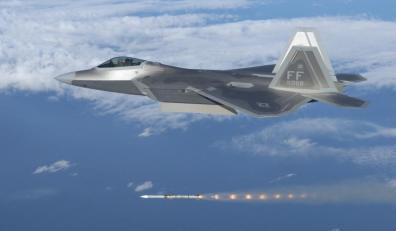 As he made clear, upon taking the helm at AFAMS, he refuses to waste any time on making the integration happen:
As he made clear, upon taking the helm at AFAMS, he refuses to waste any time on making the integration happen:
I personally believe the differences between live and simulation will continue to blur. Live or simulation? What’s the difference? What we call simulation today will become so real, it may actually influence our enemies in the future. Just imagine how that could change combat in the future.
But of course, one has to wonder if this vision is not already here, since digitally-assisted situational awareness, unmanned drones and cyber warfare are already present in militaries the world over. And as all other aspects of combat training become increasingly digitized, the distinction between simulation and warfare are themselves likely to become increasingly blurred.
Sources: motherboard.vice.com, afams.af.mil, teamorlando.org


Climate Crisis: Visualizing the Effects of Climate Change
 Climate Change means more than just on average hotter temperatures year round. There are also numerous consequences for sea levels, glaciers, weather patterns, weather stability, crop growth, fisheries, wildlife, forest fires, disease, parasites, rivers and fresh water tables. Explaining it can be a challenge, which is why visual tools like tables, maps and charts are so very useful.
Climate Change means more than just on average hotter temperatures year round. There are also numerous consequences for sea levels, glaciers, weather patterns, weather stability, crop growth, fisheries, wildlife, forest fires, disease, parasites, rivers and fresh water tables. Explaining it can be a challenge, which is why visual tools like tables, maps and charts are so very useful.
Unfortunately, these too can seem bland and technocratic, and fail to capture the true extent and critical nature of Climate Change. Luckily, this past summer, a season that has been marked by uncharacteristically cool and hot temperatures, two particularly useful visual aids have been produced that seek to remedy this. By combining data-driven predictions with aids that are both personal and global in outlook, they bring the consequences of Climate Change home.
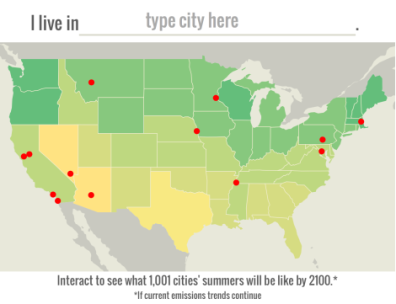 The first is known as 1001 Blistering Future Summers, a tool produced by the Princeton-based research and journalist organization Climate Central. This interactive map illustrates much hotter summers will become by the end of the century if nothing is done to stem global warming. Users simply type in the name of their hometown and the map compares current temperatures in their town to how high they will be and finds the geographic equivalent.
The first is known as 1001 Blistering Future Summers, a tool produced by the Princeton-based research and journalist organization Climate Central. This interactive map illustrates much hotter summers will become by the end of the century if nothing is done to stem global warming. Users simply type in the name of their hometown and the map compares current temperatures in their town to how high they will be and finds the geographic equivalent.
On average, according to Climate Central, daytime summer temperatures will be 4 to 6° Celsius (7 to 10° Fahrenheit) warmer across U.S. cities. That translates to most cities in the U.S. feeling like Florida or Texas feel in the summer today. For example, in the future, Boston will feel like North Miami Beach. And Las Vegas, where temperatures are projected to an average of 111 degrees, will feel more like Saudi Arabia.
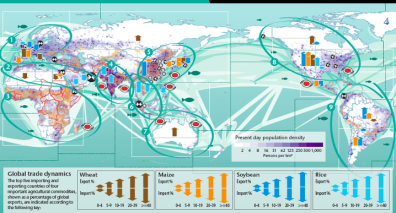 As you can imagine, changes like these will have drastic effects that go far beyond scorching summers and inflated AC bills. Furthermore, when one considers the changes in a global context, and they will be disproportionately felt, they become even more disconcerting. And that is where the series of maps, collectively known as the “human dynamics of climate change”, come into play.
As you can imagine, changes like these will have drastic effects that go far beyond scorching summers and inflated AC bills. Furthermore, when one considers the changes in a global context, and they will be disproportionately felt, they become even more disconcerting. And that is where the series of maps, collectively known as the “human dynamics of climate change”, come into play.
Developed by the U.K. Met Office (the official British weather forecast service) with the U.K. Foreign Office and several universities, they start with a “present-day” picture map – which shows trade in various commodities (wheat, maize, etc), important areas for fishing, routes for shipping and air freight, and regions with high degrees of water stress and political fragility.
 Then the maps get into specific issues, based on climate forecasts for 2100 that assume that nothing will be done to stop global warming. You can see, for example, how higher temperatures could increase demand for irrigation water; how parts of the world could see increases and decreases in water run-off into rivers; how different areas are set for more flooding; and how the warmest days in Europe, parts of Asia, and North America are projected to be 6°C warmer.
Then the maps get into specific issues, based on climate forecasts for 2100 that assume that nothing will be done to stop global warming. You can see, for example, how higher temperatures could increase demand for irrigation water; how parts of the world could see increases and decreases in water run-off into rivers; how different areas are set for more flooding; and how the warmest days in Europe, parts of Asia, and North America are projected to be 6°C warmer.
The poster also has summaries for each region of the world. North Africa, for instance, “is projected to see some of the largest increases in the number of drought days and decreases in average annual water run-off.” North America, meanwhile, is forecast to see an increase in the number of drought days, increasing temperatures on its warmest days, and, depending on the region, both increases and decreases in river flooding.
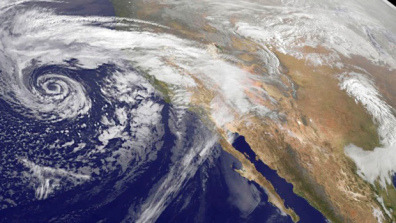 The overall impression is one of flux, with changing temperatures also resulting in vast changes to systems that human beings heavily rely on. This is the most frightening aspect of Climate Change, since it will mean that governments around the world will be forced to cooperate extensively to adapt to changes and make do with less. And in most cases, the odds of this aren’t good.
The overall impression is one of flux, with changing temperatures also resulting in vast changes to systems that human beings heavily rely on. This is the most frightening aspect of Climate Change, since it will mean that governments around the world will be forced to cooperate extensively to adapt to changes and make do with less. And in most cases, the odds of this aren’t good.
For instance,the Indu River, a major waterway that provides Pakistan and India with extensive irrigation, originates in Pakistan. Should this country choose to board the river to get more use out of its waters, India would certainly attempt to intervene to prevent the loss of precious water flowing to their farmers down river. This scenario would very easily escalate into full-scale war, with nuclear arsenals coming into play.
 The Yangtze, China’s greatest river, similarly originates in territory that the country considers unstable – i.e. the Tibetan Plateau. Should water from this river prove scarcer in the future, control and repression surrounding its source is likely to increase. And when one considers that the Arab Spring was in large part motivated by food price spikes in 2010 – itself the result of Climate Change – the potential for incendiary action becomes increasingly clear.
The Yangtze, China’s greatest river, similarly originates in territory that the country considers unstable – i.e. the Tibetan Plateau. Should water from this river prove scarcer in the future, control and repression surrounding its source is likely to increase. And when one considers that the Arab Spring was in large part motivated by food price spikes in 2010 – itself the result of Climate Change – the potential for incendiary action becomes increasingly clear.
And Europe is also likely experience significant changes due to the melting of the Greenland’s glaciers. With runoff from these glaciers bleeding into the North Atlantic, the Gulf Stream will be disrupted, resulting in Europe experiencing a string of very cold winters and dry summers. This in turn is likely to have a drastic effect on Europe’s food production, with predictable social and economic consequences.
Getting people to understand this is difficult, since most crises don’t seem real until they are upon us. However, the more we can drive home the consequences by putting into a personal, relatable format – not to mention a big-picture format – the more we can expect people to make informed choices and changes.
Sources: fastcoexist.com, (2), climatecentral.org, metoffice.gov.uk


August 25, 2014
News From Mars: Curiosity Celebrates 2 Years!
 Earlier this month, Curiosity marked its second year on the Red Planet, and this anniversary comes amidst plenty of exciting news and developments. Ever since the rover touched down at the Bradbury Landing site inside the Gale Crater on August 5, 2012 at 10:31 pm PDT (August 6, 05:31 GMT), it has been busily searching for signs that life once existed on Earth’s neighbor. And as it enters into its third year of exploration, it is getting closer to accomplishing this lofty goal.
Earlier this month, Curiosity marked its second year on the Red Planet, and this anniversary comes amidst plenty of exciting news and developments. Ever since the rover touched down at the Bradbury Landing site inside the Gale Crater on August 5, 2012 at 10:31 pm PDT (August 6, 05:31 GMT), it has been busily searching for signs that life once existed on Earth’s neighbor. And as it enters into its third year of exploration, it is getting closer to accomplishing this lofty goal.
The nuclear-powered explorer is the largest, most advanced rover ever built. And since nothing like it had ever flown before and the maintenance facility was over 160 million kilometers (1oo million miles) away, the first months that Curiosity spent on Mars involved an array of system tests before it took it first tentative rolls across the Martian sands on its roundabout path to Mount Sharp.
 Curiosity’s main mission was to find out if there are any places on Mars where life could have once existed – specifically, areas displaying minerals and geology that could have been produced by water. The Bradbury Landing site, where it touched down, turned out to be very close to an ancient dried lake bed in an area named Yellowknife Bay. According to NASA, this lake bed may have been able to sustain microbial life billions of years ago.
Curiosity’s main mission was to find out if there are any places on Mars where life could have once existed – specifically, areas displaying minerals and geology that could have been produced by water. The Bradbury Landing site, where it touched down, turned out to be very close to an ancient dried lake bed in an area named Yellowknife Bay. According to NASA, this lake bed may have been able to sustain microbial life billions of years ago.
And then, barely six months after landing, the scientists struck gold when they drilled into a rock outcrop named “John Klein” at Yellowknife Bay and unexpectedly discovered the clay bearing minerals on the crater floor. This was the first instance of Curiosity finding clay-bearing minerals. or phyllosilicates, which are a key sign that organic molecules could exist on the planet.
 As Curiosity Project Scientist John Grotzinger of the Caltech said in a statement to mark the anniversary:
As Curiosity Project Scientist John Grotzinger of the Caltech said in a statement to mark the anniversary:
Before landing, we expected that we would need to drive much farther before answering that habitability question. We were able to take advantage of landing very close to an ancient streambed and lake. Now we want to learn more about how environmental conditions on Mars evolved, and we know where to go to do that.
Compared to its first year, which was marked by many firsts – such as the first drilling operation on Mars, the first laser firing, and first UV night scans – Curiosity’s second year on the Red Planet has been more routine. However, it hasn’t been without its share of excitement. In February, the rover cleared a dune that blocked its progress and in July it negotiated a detour around rocky terrain at Zabriskie Plateau.
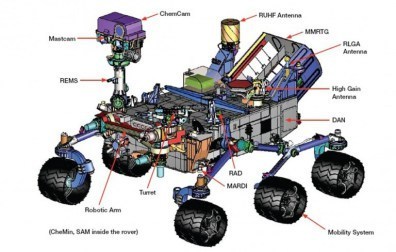 However, by far, the majority of the rovers second Earth year on the Red Planet has been spent driving as fast as possible towards a safe entry point to the slopes of Mount Sharp. To date, Curiosity’s odometer totals over 9.0 kilometers (5.5 miles) since landing inside Gale Crater on Mars in August 2012, and her on board camera has snapped over 174,000 images – many of which have been transformed into panoramic shots of the surface.
However, by far, the majority of the rovers second Earth year on the Red Planet has been spent driving as fast as possible towards a safe entry point to the slopes of Mount Sharp. To date, Curiosity’s odometer totals over 9.0 kilometers (5.5 miles) since landing inside Gale Crater on Mars in August 2012, and her on board camera has snapped over 174,000 images – many of which have been transformed into panoramic shots of the surface.
The desired destination for the rover is now about 3 kms (2 miles) southwest of its current location. This consists of a bedrock unit that for the first time is actually part of the humongous mountain known as Mount Sharp. As the primary destination on her ongoing mission, this layered mountain in the Gale Crater towers 5.5 kilometers (3.4 miles) into the Martian sky, and is believed to hold the most compelling evidence of life yet.
 The sedimentary layers in the lower slopes of Mount Sharp are the principal reason why the science team specifically chose Gale Crater as the primary landing site. Using high resolution spectral observations collected by NASA’s powerful Mars Reconnaissance Orbiter (MRO), they were able to determine the presence of deposits of clay-bearing minerals. or phyllosilicates, a key sign that organic molecules could exist on the planet.
The sedimentary layers in the lower slopes of Mount Sharp are the principal reason why the science team specifically chose Gale Crater as the primary landing site. Using high resolution spectral observations collected by NASA’s powerful Mars Reconnaissance Orbiter (MRO), they were able to determine the presence of deposits of clay-bearing minerals. or phyllosilicates, a key sign that organic molecules could exist on the planet.
In late July of this year, the rover arrived in an area of sandy terrain called “Hidden Valley” which is on the planned route ahead leading to “Pahrump Hills”. Scientists anticipated that the outcrops here would offer a preview of a geological unit that is part of the base of Mount Sharp for the first time since landing. However, the sharp edged rocks caused significant damage to the rovers six aluminum wheels, forcing it to make a detour.
 This detour will take Curiosity to a similar site called “Bonanza King” to carry out its fourth drilling mission. According to NASA, this is no great loss because the two areas are geologically connected and the space agency is keen to look at a formation that is different from the crater floor formations encountered so far. Engineers are studying Bonanza King to see if its is suitable for drilling by assessing whether or not the plates seen on the surface are loose.
This detour will take Curiosity to a similar site called “Bonanza King” to carry out its fourth drilling mission. According to NASA, this is no great loss because the two areas are geologically connected and the space agency is keen to look at a formation that is different from the crater floor formations encountered so far. Engineers are studying Bonanza King to see if its is suitable for drilling by assessing whether or not the plates seen on the surface are loose.
When drilling operations resume, NASA will study alternative routes to Mount Sharp and determine how well the rover’s wheels can handle sand ripples. However, as Dr. Jim Green, NASA’s Director of Planetary Sciences, said during an interview during the rover’s second anniversary in Washington, DC : “Getting to Mount Sharp is the next big step for Curiosity and we expect that in the Fall of this year.”
Godspeed, little rover! And I do hope that it finds the long-sought-after organic particles it has been looking for since the mission began. This discovery will not only show that life once existed on Mars (and still does in some capacity) it will also be one of the greatest scientific finds of all time, and maybe even serve as the starting point for ensuring that it can exist again.
Sources: universetoday.com, gizmag.com, (2)


The Future is Here: Injectable Foam for the Battlefield
 Given the advances in medical technology, it is quite surprising when it comes to gunshot wounds and battlefield injuries, old-world methods are still be used. For example, if a soldier is wounded in an extremity such as the the arm of leg, bandages and/or tourniquets should suffice. But for wounds that occur center mass, or at the junction of an extremity (neck, groin, or shoulder), stopping the flow of blood usually involves simply packing the wound with gauze.
Given the advances in medical technology, it is quite surprising when it comes to gunshot wounds and battlefield injuries, old-world methods are still be used. For example, if a soldier is wounded in an extremity such as the the arm of leg, bandages and/or tourniquets should suffice. But for wounds that occur center mass, or at the junction of an extremity (neck, groin, or shoulder), stopping the flow of blood usually involves simply packing the wound with gauze.
However, in recent months, new and improved solutions have been developed. The first was the XStat, a new type of syringe that contains hundreds of injectable sponges that was developed by a former Special Ops medic and his Oregon-based startup, RevMedX. Similarly, former military and trauma surgeons at Massachusetts General Hospital have been working on Wound Stasis Technology, an injectable foam that is fed into the stomach to stop internal bleeding.
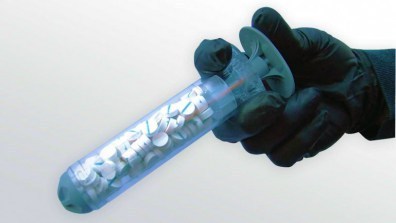 And now, a group of students from Johns Hopkins University are working on a hardening foam that can be injected directly into flesh wounds to stop the bleeding. Combining the best of both worlds, the concept involves using a plastic syringe that contains two liquids – polyol and a diisocyanatein – that form a polyurethane foam that expands to fill the wound cavity and then hardens.
And now, a group of students from Johns Hopkins University are working on a hardening foam that can be injected directly into flesh wounds to stop the bleeding. Combining the best of both worlds, the concept involves using a plastic syringe that contains two liquids – polyol and a diisocyanatein – that form a polyurethane foam that expands to fill the wound cavity and then hardens.
This hardened foam not only seals the wound shut, but applies pressure to stop the bleeding. Additionally, while still in its liquid state, the foam is able to run deep and thoroughly into the cavity. This is important, as it’s often difficult to find the sources of blood loss in such injuries, and then apply clotting agents to them. And once the soldier is evacuated to a hospital, the foam is easily removed.
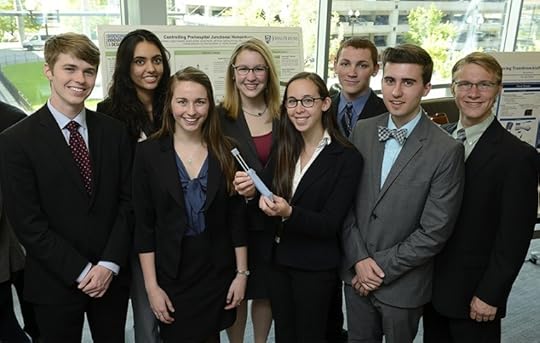 As Sydney Rooney, the student team leader of the John Hopkins research team, said in an interview with Gizmag:
As Sydney Rooney, the student team leader of the John Hopkins research team, said in an interview with Gizmag:
Since the wound will have to be debrided extensively anyway [have its damaged tissue removed], we are not anticipating any issue in that regard. We are still testing it so we don’t know the final answer, but our physicians aren’t anticipating for it to be a problem. Ideally, most of the block will be removed in one chunk.
When addressing the army’s Wound Stasis Technology, which is currently being developed with the help of DARPA, Rooney claimed that there system is different. Whereas the DARPA system is designed for internal bleeding, applying the same methodology to surface wounds would be impractical. Hence their particular brand of injectable foam, which expands to a degree to stop “junctional bleeds”.
Their foam expands to a way larger size and more aggressively than many a junctional bleed permits. Since the stomach expands, their foam expands by 30 times and it doesn’t matter, whereas if you put it in, say, a junctional neck wound, it could apply too much pressure.
The Johns Hopkins device has so far been tested on flesh-simulating gel containing artificial blood vessels, with animal trials planned to take place next. By the time it comes to market, it will be well positioned alongside DARPA’s WST foam for treating battlefield wounds. It may come up against the XStat for treating flesh wounds, but room certainly exists from similar products given the sheer number of wounds on the battlefield.
And given the amount of gun-related violence in the United States and around the world, these inventions will certainly be welcomed by trauma surgeons and police forces once they trickle down to the civilian market. And in the meantime, be sure to check out this cool video from John Hopkins University, where Rooney and her team present their new invention:
Sources: gizmag.com, releases.jhu.edu


Honest Trailers: Captain American – The Winter Soldier
 Here is one of the latest from Screen Junkies’ “Honest Trailers”. And the funny thing is, it really makes me want to see it! But of course, it wouldn’t be HT if they didn’t mock a little bit, and the plot holes they identified are pretty well true. Much like with Iron Man 3, this movie begs the question “Where the hell are the rest of the Avengers?” Come to think of it, why do you even need other superheroes when some are already nigh-invulnerable?
Here is one of the latest from Screen Junkies’ “Honest Trailers”. And the funny thing is, it really makes me want to see it! But of course, it wouldn’t be HT if they didn’t mock a little bit, and the plot holes they identified are pretty well true. Much like with Iron Man 3, this movie begs the question “Where the hell are the rest of the Avengers?” Come to think of it, why do you even need other superheroes when some are already nigh-invulnerable?
But you know you shouldn’t ask such questions, because then you’d be treading on well-trod Batman vs. Superman territory. Too soon! One thing I will contest from the video though is where they say “your least favorite Avenger”. Everybody knows that’s Hawkeye! Not only is his superpower archery, he spent half the movie as the villain’s pawn, and the other half… well, shooting arrows.
I kid, of course. What else can you do when it comes to blockbusters that make more money than you will ever see in your life? Enjoy the trailer:


August 24, 2014
Total Recall (2014)
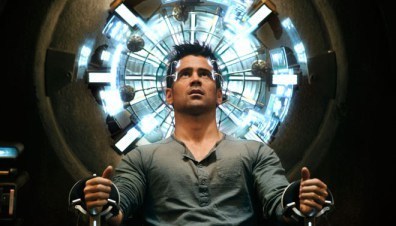 Remake season continues for me, this week with the 2012 remake of the 1990 original movie Total Recall. Back when it came out, I was seriously questioning what the hell was going on in Hollywood, as this was just another remake in a summer that was packed full of them. But as the saying goes, “put up or shut up” – i.e. if I’m going to complain about the tide of remade movies, I might as well know what I’m talking about.
Remake season continues for me, this week with the 2012 remake of the 1990 original movie Total Recall. Back when it came out, I was seriously questioning what the hell was going on in Hollywood, as this was just another remake in a summer that was packed full of them. But as the saying goes, “put up or shut up” – i.e. if I’m going to complain about the tide of remade movies, I might as well know what I’m talking about.
And much like last time, I figure that a review of this movie should start by paying a little lipservice to the original (which this remake did in spades!)
Total Recall 1990: The film is set in the not-so-distant future, where a man named Douglas Quaid is haunted by dreams of Mars and a mysterious woman and seeks an escape from his humdrum life as a metal worker. He learns of a memory-implant service named Rekall which he believes might be the solution, since they can provide a simulated adventure that he has always wanted – to go to Mars and live a life of adventure.
The film is set in the not-so-distant future, where a man named Douglas Quaid is haunted by dreams of Mars and a mysterious woman and seeks an escape from his humdrum life as a metal worker. He learns of a memory-implant service named Rekall which he believes might be the solution, since they can provide a simulated adventure that he has always wanted – to go to Mars and live a life of adventure.
He then goes to Rekall and selects a package that includes a simulation where he is a special agent on a top-secret mission. However, things go terribly wrong when he begins acting out his secret agent character before the company has even had a chance to implant it. They sedate him and put him in a car, hoping to wash their hands of the incident. But when he wakes up, his friends and wife try to kill him, claiming he is not who he says he is.
 He is given a briefcase by a former associate which contains a recording, in which he is telling himself that he’s really a man named Carl Hauser, and that the governor of Mars (Cohaagen) erased his memory because of a secret he carries. Quaid/Hauser then goes to Mars, retracing the path his old self has given him, and finds his way to Melina and the resistance. She then takes him to Kuato, leader of the resistance, to unlock his memories.
He is given a briefcase by a former associate which contains a recording, in which he is telling himself that he’s really a man named Carl Hauser, and that the governor of Mars (Cohaagen) erased his memory because of a secret he carries. Quaid/Hauser then goes to Mars, retracing the path his old self has given him, and finds his way to Melina and the resistance. She then takes him to Kuato, leader of the resistance, to unlock his memories.
They help him recover the secret he’s been carrying – which involves the discovery of an alien artifact under the surface of Mars – but the base is then found and overrun. He and Melina are taken prisoner, and he learns that Hauser was never a double-agent, but a mole working with Cohaagen all along to lead them to the resistance. They strap him and Melina into chairs and try to force Hauser to recover his old self.
 However, Quaid and Melina escape and enter the alien artifact. Cohaagen tries to stop them, claiming its a doomsday device that will destroy the planet, but Quaid manages to activate it before the three of them are sucked out onto the surface. The reactor turns out to be an atmospheric generator that turns Mars’ icy core into breathable air, which then pours out onto the surface, saving Melina and Quaid and making the planet livable.
However, Quaid and Melina escape and enter the alien artifact. Cohaagen tries to stop them, claiming its a doomsday device that will destroy the planet, but Quaid manages to activate it before the three of them are sucked out onto the surface. The reactor turns out to be an atmospheric generator that turns Mars’ icy core into breathable air, which then pours out onto the surface, saving Melina and Quaid and making the planet livable.
Quaid kisses Melina, still not sure if what he has experienced is real or a dream.
Total Recall 2012: At the end of the 21st century, the world has been devastated by chemical warfare, rendering all but two regions unihabitable. Whereas the wealthy live in the northern hemisphere – in the United Federation of Britain (UFB) – and in the Colony (former Australia). Tensions between the two are high due to the latter demanding independence, and a series of terrorist bombings attributed to a man named Matthias.
At the end of the 21st century, the world has been devastated by chemical warfare, rendering all but two regions unihabitable. Whereas the wealthy live in the northern hemisphere – in the United Federation of Britain (UFB) – and in the Colony (former Australia). Tensions between the two are high due to the latter demanding independence, and a series of terrorist bombings attributed to a man named Matthias.
Enter into this Douglas Quaid, a factory worker who makes the transit between the Colony and the UFB every day on a massive subterranean lift called “The Fall”. At night, he dreams of fleeing for his life with a woman, and then being taken captive. He attributes these dreams to feeling trapped in his dead end life, and then hears of the memory-implant service known as Rekall.
 Against his friend Harry’s recommendation, he goes to Rekall and requests a memory in which he is a intelligence service agent. The chief technician reveals that any duplication will cause problems, and then stops the process when he learns that Quaid really is a secret agent. Federal agents then break in and shoot everyone and try to take Quaid prisoner. However, he kills his captors and escapes.
Against his friend Harry’s recommendation, he goes to Rekall and requests a memory in which he is a intelligence service agent. The chief technician reveals that any duplication will cause problems, and then stops the process when he learns that Quaid really is a secret agent. Federal agents then break in and shoot everyone and try to take Quaid prisoner. However, he kills his captors and escapes.
Coming home to his wife Lori, he tells her of what happened and she tries to kill him as well. After escaping again, a pursuit begins, and Lori is told by UFB Chancellor Cohaagen to bring Quaid in alive. Meanwhile, Quaid is told by a former coworker to find the “key”, and a hidden message in the call leads him to a safety deposit box containing fake IDs, a holographic disguise, and a recording in which he explains what is happening.
 Apparently, Quaid is actually a man named Hauser who worked for UFB intelligence. He was given the task of infiltrating the Colony’s resistance until he met Melina, who convinced him to change sides. He is instructed to go to the UFB and find it, but upon arrival, he is found out and forced to flee again. He is then rescued by the woman he keeps seeing in his dreams and escape Lori for the second time.
Apparently, Quaid is actually a man named Hauser who worked for UFB intelligence. He was given the task of infiltrating the Colony’s resistance until he met Melina, who convinced him to change sides. He is instructed to go to the UFB and find it, but upon arrival, he is found out and forced to flee again. He is then rescued by the woman he keeps seeing in his dreams and escape Lori for the second time.
Together, they make it away and Quaid takes them to his old apartment to hide. Here, he finds the “key”, which is a recorded message on his piano that tells him that Cohaagen has been behind the bombings, and that he is planning an invasion of the Colony with an army of synthetics so he can level it and rebuild it as a new living space for the UFB. Luckily, Hauser discovered a kill code for the synthetics, which he must get to Matthias to stop the invasion.
 As they attempt to leave his apartment, they are interrupted by Harry, who claims Quaid is still at Rekall and that he is an implant there to help him wake up to reality. Quaid chooses to shoot him and save Melina, and they are once again pursued by Lori and once again escape. They travel via the Fall to the Colony, where they meet with Matthias to hand over the memory that contains the kill code.
As they attempt to leave his apartment, they are interrupted by Harry, who claims Quaid is still at Rekall and that he is an implant there to help him wake up to reality. Quaid chooses to shoot him and save Melina, and they are once again pursued by Lori and once again escape. They travel via the Fall to the Colony, where they meet with Matthias to hand over the memory that contains the kill code.
Unfortunately, the memory proves to be a recording of Cohaagen telling them they’ve been had. He then shows up with Lori and several security forces, kill Matthias, and take Melina away. Hauser is told he was given a false code to lead them to the resistance, and that a backup of his memories that predate his betrayal will be restored. Hauser realizes his old colleague is with them, has left his restrain undone, and escapes.
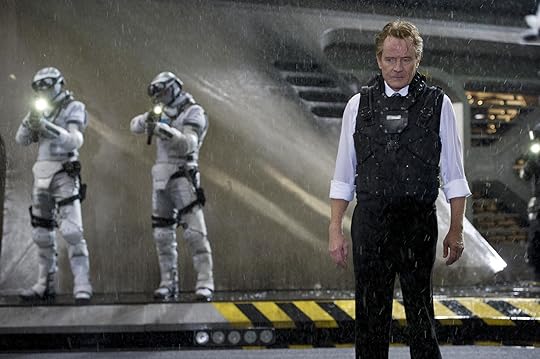 A fight takes place aboard the Fall, and Hauser and Melina plant a series of bombs on the rails. The Fall arrives and the synthetics begin to deploy, and Hauser begins fighting it out with Cohaagen and his forces. Hauser and Melina defeat Cohaagen and then detonate the bombs, which causes the Fall to begin falling backwards towards the center of the Earth where it explodes.
A fight takes place aboard the Fall, and Hauser and Melina plant a series of bombs on the rails. The Fall arrives and the synthetics begin to deploy, and Hauser begins fighting it out with Cohaagen and his forces. Hauser and Melina defeat Cohaagen and then detonate the bombs, which causes the Fall to begin falling backwards towards the center of the Earth where it explodes.
Hauser loses consciousness and wakes up with Melina inside a medical vehicle. He realizes it is actually Lori wearing his holographic disguise and they fight again, and he finally kills her. He and Melina are reunited, and they stand together and hear how the Colony is now expecting full independence. He sees a Rekall signs and has a moment of doubt, but ignores it and kisses Melina.
Summary:
Once again, I am forced to give this one to the original. Whereas the remake had some signs of quality, which included decent enough performances from Farrel, Biel, Beckinsale, and Cranston. But unfortunately, some decent sets, a whole of lot of chase scenes and big budget special effects were not enough to save this movie from a relatively weak plot and a whole lot, too much CGI, and a whole lot of borrowing.
 First of all, why did they do away with the whole Mars plot? The story which both the original and the remake are based on – “We Can Remember It For You Wholesale” by Philip K Dick – centered on Mars, though it did not take place there. Including it in the plot seems like a no-brainer. But for some reason, the writers of the remake wanted a story focused on Earth and the dangers of chemical warfare and rezoning.
First of all, why did they do away with the whole Mars plot? The story which both the original and the remake are based on – “We Can Remember It For You Wholesale” by Philip K Dick – centered on Mars, though it did not take place there. Including it in the plot seems like a no-brainer. But for some reason, the writers of the remake wanted a story focused on Earth and the dangers of chemical warfare and rezoning.
Second, the story did away with a crucial element this time, which was the good old fashioned mind-fuck of the original. In that version, not only did we not know for certain whether or not Quaid/Hauser was dreaming the whole thing, we truly thought he was a good guy up until they showed otherwise. The plot involving replacing his memories was a ruse by Cohaagen in order to get Hauser past Kuato’s psychic detection.
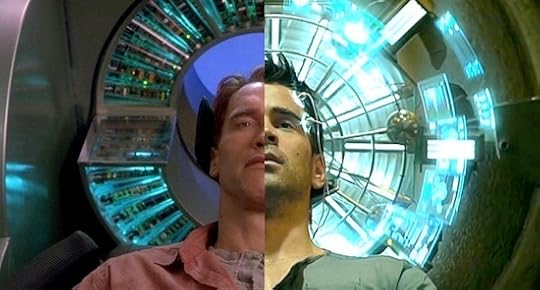 In other words, in order to infiltrate the resistance, he had to believe he was an actual traitor. Thus began the convoluted process of making the resistance think he was genuine by erasing his memory and dumping him on Earth, then leading him to retrace his path and find his way to Kuato. Though the information he had about the Martian artifact was real, it was just the bait they dangled in front of the resistance’s nose to get them to give up their location.
In other words, in order to infiltrate the resistance, he had to believe he was an actual traitor. Thus began the convoluted process of making the resistance think he was genuine by erasing his memory and dumping him on Earth, then leading him to retrace his path and find his way to Kuato. Though the information he had about the Martian artifact was real, it was just the bait they dangled in front of the resistance’s nose to get them to give up their location.
Which brings me to item two in the weak plot front. The fact that Quaid/Hauser was actually a good guy in this version made me respect the plot way less. It was cool finding out the hero was a villain, and then seeing him chose to remain with his implanted identity rather than allow himself to be turned back into his old self. It was a big reveal, added a solid twist to the plot, and even raised an existential question or two.
 And then there was the key moment where Quaid/Hauser has to decide what is real. In both versions, this takes the form of someone telling him he’s still dreaming and has to do something he won’t like in order to wake up. In the original, it involved Quaid being handed a pill which the man from Rekall says is a symbol of his desire to wake up, but could just as easily be a sedative. He realizes the man is a fake by the way he’s sweating and shoots him.
And then there was the key moment where Quaid/Hauser has to decide what is real. In both versions, this takes the form of someone telling him he’s still dreaming and has to do something he won’t like in order to wake up. In the original, it involved Quaid being handed a pill which the man from Rekall says is a symbol of his desire to wake up, but could just as easily be a sedative. He realizes the man is a fake by the way he’s sweating and shoots him.
In the remake, it takes the form of him being confronted by his friend Harry who tells him he’s dreaming and to shoot Melina, a figment of his imagination. He chooses to shoot his friend Harry and accept that what he is experiencing is real because Jessica Biel begins to cry. But isn’t that be exactly what a fantasy woman would do in that situation? Seemed like quite the gambit there.
 Also, the “secret” that Hauser had stumbled upon in this version was really quite lame. In the original, it involved an alien artifact, which is oodles more interesting than than Cohaagen planning to rezone Australia for more living space. Sure, the idea was laden with scientific inaccuracies – melting an ice core doesn’t instantly terraform a planet! – the ridiculousness of it could always be circumvented by arguing that it really was all a dream.
Also, the “secret” that Hauser had stumbled upon in this version was really quite lame. In the original, it involved an alien artifact, which is oodles more interesting than than Cohaagen planning to rezone Australia for more living space. Sure, the idea was laden with scientific inaccuracies – melting an ice core doesn’t instantly terraform a planet! – the ridiculousness of it could always be circumvented by arguing that it really was all a dream.
Last, but not least, there were the many parts of this remake that were obvious shout outs or references to the original. First, you had the three-breasted hooker, who was well cast and easy on the eyes. You also had key lines like – “If I’m not me, then who the hell am I?” “How would I know? I just work here.” And of course, the redheaded woman at the customs line. But these seemed a bit too many and obvious to be a simple wink and a nod.
 Also, Bill Knighy had barely any screen time at all, and only really comes on to paraphrase what Kuato said in the original film. And the bad guys? No comparison! While Kate Beckinsale was believable enough as a villainess, Brian Cranston simply did not hold a candle to the original’s Ronny Cox and Michael Ironside. Those two were perfectly cast as the evil, somewhat over-the-top bad guys, the perfect counter to Arnie’s over-the-top good guy.
Also, Bill Knighy had barely any screen time at all, and only really comes on to paraphrase what Kuato said in the original film. And the bad guys? No comparison! While Kate Beckinsale was believable enough as a villainess, Brian Cranston simply did not hold a candle to the original’s Ronny Cox and Michael Ironside. Those two were perfectly cast as the evil, somewhat over-the-top bad guys, the perfect counter to Arnie’s over-the-top good guy.
But getting past that, there’s the matter of what the movie kinda-sorta did right. The settings were all quite artistic, with the world in the Colony being gritty, crowded, dirty looking, and consisting of a great deal of cultural influences. By contrast, the UFB looked cleaner, brighter, and the design seemed singular by comparison. And the emphasis of shortages of space was summed up nicely by the massive, overlapping layers of structures.
 And the “synthetics” were artfully done and kind of cool looking. As were the flying cars, the aerial traffic lanes, and the three-dimensional elevator pods that crisscrossed the sky. And “The Fall” was a pretty neat idea, especially with the whole “gravity reversal thing”. But in just about all cases, these things have been done before. The sets are reminiscent of Blade Runner, with it’s gritty, crowded streets, signs in Asian characters, and the synthetic humans wandering around.
And the “synthetics” were artfully done and kind of cool looking. As were the flying cars, the aerial traffic lanes, and the three-dimensional elevator pods that crisscrossed the sky. And “The Fall” was a pretty neat idea, especially with the whole “gravity reversal thing”. But in just about all cases, these things have been done before. The sets are reminiscent of Blade Runner, with it’s gritty, crowded streets, signs in Asian characters, and the synthetic humans wandering around.
The robots also looked like a cross between Storm Troopers and the machines from I, Robot, and the flying cars called to mind another Philip K Dick adaptation, namely Minority Report. What can be said about a movie who’s set designs and concept art are quite impressive, but which borrow heavily from several other franchises? It’s like this movie is subtly mocking itself for a lack of originality – which makes sense since it’s a remake.
 And with all the special effects, things looked entirely too fake. People today might find the Kuato puppet and the molded plastic suits of the mutants to be outdated, but those showed a lot of heart versus the extensive use of CGI in this one. In fact, seeing movies like these make me long for the days of old-style effects where costumes, real actors and real sets were built rather than generating everything digitally. George Lucas, I’m looking at you as I say this!
And with all the special effects, things looked entirely too fake. People today might find the Kuato puppet and the molded plastic suits of the mutants to be outdated, but those showed a lot of heart versus the extensive use of CGI in this one. In fact, seeing movies like these make me long for the days of old-style effects where costumes, real actors and real sets were built rather than generating everything digitally. George Lucas, I’m looking at you as I say this!
I’d say its blatantly obvious at this point, but this one definitely goes to the original. And much like the Robocop remake, it begs the question: why redo a movie when the original got it right? Sure, the 1990 version of Total Recall wasn’t perfect. It had a lot of cheesy elements and some massive scientific inaccuracies, but it managed to both entertain and impress with the way it played with perceptions, twisted things around and kept people guessing until the end.
In this remake, there really is no mystery, the plot is simplified, the most important element (i.e. Mars) is dropped, some of the best elements are missing, and it borrowed too heavily from multiple sources – not the least of which was the original. So really, why was it even made? In this season of remake review, I find myself asking that question quite a lot! Not a good way to start…
Okay, onto new things. Which may, at this point, include The Teenage Mutant Ninja Turtles relaunch. No promises though :)


August 22, 2014
Climate Wars: Cropland Destruction and Improvement
 Climate Change is currently recognized as one of the greatest threats to the stability and well being of the world and its people. But far worse than rising sea levels, unpredictable weather patterns, and an increase in forest fires is the threat that it could have on the global food supply. As our population increases by several billion over the next few decades, these problems will make it even harder to feed everyone.
Climate Change is currently recognized as one of the greatest threats to the stability and well being of the world and its people. But far worse than rising sea levels, unpredictable weather patterns, and an increase in forest fires is the threat that it could have on the global food supply. As our population increases by several billion over the next few decades, these problems will make it even harder to feed everyone.
Up until now, predictions and projections have taken into account rising temperatures, drought, erosion, and longer growing seasons. But a recent study, produced by researchers at MIT and Colorado State University shows that air pollution is also a major factor. In their report, which was published in Nature Climate Change, they claim that ground-level ozone could exacerbate the effects on staple food crops like wheat, soybeans, maize, and rice.
 Using two scenarios, researchers mapped out the tandem relationship between pollution and climate change. As a baseline, the MIT and Colorado State researchers estimate that climate change alone will result in a 11% decrease in global crop production. But if countries fail to substantially curb greenhouse gas emissions (the first scenario), the scientists’ model shows that air pollution could trigger an additional 4% of crop failures.
Using two scenarios, researchers mapped out the tandem relationship between pollution and climate change. As a baseline, the MIT and Colorado State researchers estimate that climate change alone will result in a 11% decrease in global crop production. But if countries fail to substantially curb greenhouse gas emissions (the first scenario), the scientists’ model shows that air pollution could trigger an additional 4% of crop failures.
That means that barring significant changes, croplands could see a 15% drop in productivity in the next 40 years. But if countries work to decrease greenhouse gas emissions after 2040, the researchers’ model shows that reduced air pollution could actually offset other negative impacts of warming on crops. They calculate that reduced air pollution in this second scenario could actually increase yields by 3%.
 The link between air quality and food production may seem a bit odd, but the logic is actually very straightforward. Basically, the atmosphere forms ozone when sunlight energizes pollutants generated from sources like cars and power plants. Ozone concentrations can also increase at higher temperatures, the kind that already wither temperature-sensitive crops like maize. On top of the heat, increased ozone levels attack pollution-sensitive crops, like wheat.
The link between air quality and food production may seem a bit odd, but the logic is actually very straightforward. Basically, the atmosphere forms ozone when sunlight energizes pollutants generated from sources like cars and power plants. Ozone concentrations can also increase at higher temperatures, the kind that already wither temperature-sensitive crops like maize. On top of the heat, increased ozone levels attack pollution-sensitive crops, like wheat.
In the climate scenario where emissions decrease after 2040, the reduction in ozone alone would be enough to increase wheat production in the U.S. and China, the researchers say. Their findings show that reducing air pollution could slow the negative impacts of climate change–even enough to reverse some of them. But some regions will be negatively impacted no matter what.
 As Amos Tai, one of the study’s co-authors, explained:
As Amos Tai, one of the study’s co-authors, explained:
It appears that South Asia will be the most hard-hit by the combination of warming and ozone trends, where ozone is expected to increase even in the more optimistic scenario. African countries with low domestic production and heavily reliant on food imports are also expected to suffer more in terms of climate-pollution-driven food insecurity.
In short, food production is likely to suffer no matter what, but the effects could be confined to certain areas of the world. With proper management, and the provision of food to these regions from those that are unaffected (say, a pollution-fighting US and China), the worst could be avoided. And there’s some good news coming from another report, which claims we can further increase our food production without taxing the environment.
 According to a new report by researchers at the University of Minnesota’s Institute on the Environment, by focusing efforts to improve food systems on a few specific regions, crops and actions could make it possible to both meet the basic needs of three billion more people while simultaneously decreasing agriculture’s environmental carbon footprint. The report, published in Science back in July, may sound like fantasy, but the argument offered is logical and compelling.
According to a new report by researchers at the University of Minnesota’s Institute on the Environment, by focusing efforts to improve food systems on a few specific regions, crops and actions could make it possible to both meet the basic needs of three billion more people while simultaneously decreasing agriculture’s environmental carbon footprint. The report, published in Science back in July, may sound like fantasy, but the argument offered is logical and compelling.
The report focuses on 17 key crops that produce 86 percent of the world’s crop calories and account for most irrigation and fertilizer consumption. It then proposes a set of key actions in three broad areas that have the greatest potential for reducing the environmental impact of agriculture while boosting production. For each, it identifies specific “leverage points” where NGOs, foundations, governments, businesses and citizens can have the greatest impact.
 The biggest opportunities cluster in six countries – China, India, U.S., Brazil, Indonesia and Pakistan – along with Europe. As the report’s lead author Paul West, co-director of the Institute on the Environment’s Global Landscapes Initiative, explains:
The biggest opportunities cluster in six countries – China, India, U.S., Brazil, Indonesia and Pakistan – along with Europe. As the report’s lead author Paul West, co-director of the Institute on the Environment’s Global Landscapes Initiative, explains:
This paper represents an important next step beyond previous studies that have broadly outlined strategies for sustainably feeding people. By pointing out specifically what we can do and where, it gives funders and policy makers the information they need to target their activities for the greatest good.
Overall, the report identified a number of major areas of opportunity and key leverage points for improving the efficiency and sustainability of global food production. First, there is reducing the “yield gap” – i.e. the difference between potential and actual crop yields – in many parts of the world. Currently, the largest gaps are to be found in Africa, Asia and Eastern Europe, and reducing it by just 50% could provide enough calories to feed 850 million more people.
 Second, there is improving growth efficiency. The study identified two key areas where major opportunities exist to reduce climate impacts and improve efficiency of crop growth. These included the reduction of emissions of global greenhouse gas – which agriculture is responsible for 20 t0 35 percent of – in the form of CO2, tropical deforestation and methane, as well as improved efficiency in water usage.
Second, there is improving growth efficiency. The study identified two key areas where major opportunities exist to reduce climate impacts and improve efficiency of crop growth. These included the reduction of emissions of global greenhouse gas – which agriculture is responsible for 20 t0 35 percent of – in the form of CO2, tropical deforestation and methane, as well as improved efficiency in water usage.
In the case of emissions, the biggest opportunities are in Brazil and Indonesia where deforestation is a major problem, and in China, India and the US, where the production of rice, livestock, and crop fertilization all lead to sizable carbon and methane emissions. With respect to nutrient use, the study found that worldwide, 60 percent of nitrogen and nearly 50 percent of phosphorus applications exceed what crops need to grow.
 In the case of water usage, the greatest opportunities are in China, India and the US, where the production of rice, wheat and corn create the most demand for irrigation. India, Pakistan, China and the U.S. also account for the bulk of irrigation water use in water-limited areas. Thus, by boosting crop water use efficiency could also reduce water demand by 8 to 15% without compromising food production.
In the case of water usage, the greatest opportunities are in China, India and the US, where the production of rice, wheat and corn create the most demand for irrigation. India, Pakistan, China and the U.S. also account for the bulk of irrigation water use in water-limited areas. Thus, by boosting crop water use efficiency could also reduce water demand by 8 to 15% without compromising food production.
Third, the report calls for improved efficiency in crop use, which can be done by shifting crops from livestock to humans use and reducing food waste. Currently, the amount of crops fed to animals is sufficient to meet the calorie needs of 4 billion people. The U.S., China and Western Europe account for the bulk of this “diet gap,” with corn being the main crop diverted to animal feed. Shifting these crops could also form a “safety net” in the event of an unforeseen shortfall.
Last, but not least, the report calls for the elimination of food waste, which accounts for some 30 to 50 percent of food production worldwide. Again, the U.S., China and India are the major players, and reducing waste in these three countries alone could yield food for more than 400 million people. All told, these changes could allow for enough food for an additional 3 billion people, which is what the world population is expected to reach by 2050.
 Overall, West summarizes the report and its recommendations as follows:
Overall, West summarizes the report and its recommendations as follows:
Sustainably feeding people today and in the future is one of humanity’s grand challenges. Agriculture is the main source of water use, greenhouse gas emissions, and habitat loss, yet we need to grow more food. Fortunately, the opportunities to have a global impact and move in the right direction are clustered. By focusing on areas, crops and practices with the most to be gained, companies, governments, NGOs and others can ensure that their efforts are being targeted in a way that best accomplishes the common and critically important goal of feeding the world while protecting the environment. Of course, while calories are a key measure of improving food security, nutrition, access and cultural preferences must also be addressed. But the need to boost food security is high. So let’s do it.
As always, the good news is contained within the bad. Or more precisely, every crisis present us with an opportunity for change and advancement. Though Climate Change and air pollution may threaten current and future levels of food production, there are solutions. And in all cases, they present opportunities for healthier living, more efficient use of land and water, and a more sustainable way of meeting our most basic needs.
Sources: fastcoexist.com, sciencedaily.com


Cyberwars: DHS Hack and “Largest Data Breach” Ever
 My apologies folks for my stingy presence in the ether as of late. Been busy with house-sitting, writing, and a slew of other distractions. But now that I’m home again at the tail end of summer vacay, you can expect to hear more from me before school starts. And there are a number of stories that I have backlogged over the past few weeks and wish to write about. Not the least of which was a series of developments in this ongoing feud we call cyberwarfare.
My apologies folks for my stingy presence in the ether as of late. Been busy with house-sitting, writing, and a slew of other distractions. But now that I’m home again at the tail end of summer vacay, you can expect to hear more from me before school starts. And there are a number of stories that I have backlogged over the past few weeks and wish to write about. Not the least of which was a series of developments in this ongoing feud we call cyberwarfare.
First up, there was the major cyberattack that occurred in early August against one of the Department of Homeland Security’s (DHS) biggest contractors. Known as the US Investigations Services – which performs government background checks – the breach involved the hacking of their computer systems, apparently for the sake of stealing personal information on a number of DHS employees.
 As the US Investigations Services said on their website:
As the US Investigations Services said on their website:
Experts who have reviewed the facts gathered to-date believe it has all the markings of a state-sponsored attack. We will support the authorities in the investigation and any prosecution of those determined to be responsible for this criminal attack.
The scope of the breach is unclear, but to be on the safe side, the DHS has temporarily suspended working with this contractor. What’s more, USIS indicated that the extent and nature of the hacking “has all the markings of a state-sponsored attack.” If true, this would be the latest in a long-series of suspected state-sponsored cyberattacks that have targeted US government services and employees.
 As recent as March of this year, officials within the US government claimed that hackers linked to the Chinese military – the infamous PLA Unit 61398 – had infiltrated government servers in an attempt to steal information on thousands of federal employees with top-secret clearance. This was just the latest round in an ongoing game of blame and counter-blame, with the US and Chinese governments discovering breaches and pointing the finger at each other.
As recent as March of this year, officials within the US government claimed that hackers linked to the Chinese military – the infamous PLA Unit 61398 – had infiltrated government servers in an attempt to steal information on thousands of federal employees with top-secret clearance. This was just the latest round in an ongoing game of blame and counter-blame, with the US and Chinese governments discovering breaches and pointing the finger at each other.
Meanwhile, the DHS and FBI are busily trying to determine what information may have been compromised and who, amongst its many employees, could have been effected. As DHS spokesman Peter Boogaard said in a recent interview with the Washington Post:
Our forensic analysis has concluded that some DHS personnel may have been affected, and DHS has notified its entire workforce. We are committed to ensuring our employees’ privacy and are taking steps to protect it.
 On their own, cyber-intrusions and data breaches have a way of making people nervous. But when the combatants are major governments, and the victims number in the thousands, its an especially disconcerting situation. Add to that the fact that the victims are the very people responsible for ensuring the protection of citizens, and you have a trifecta of concern. Alas, this was not the only time this sort of thing took place during the month of August…
On their own, cyber-intrusions and data breaches have a way of making people nervous. But when the combatants are major governments, and the victims number in the thousands, its an especially disconcerting situation. Add to that the fact that the victims are the very people responsible for ensuring the protection of citizens, and you have a trifecta of concern. Alas, this was not the only time this sort of thing took place during the month of August…
In what is being labelled as the biggest “the largest data breach known to date”, the Russian criminal hacker organization known as Cybervor committed a cyberattack that covers an enormous number of records. According to the New York Times report, these include some 1.2 billion username and password combinations, anf 542 million unique email accounts lifted from 420,000 compromised domains.
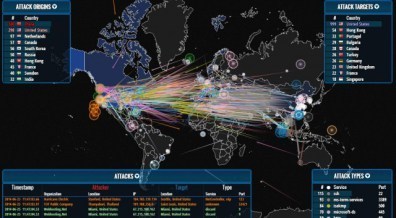 Alex Holden, founder of Hold Security (the company that uncovered the heist), said in a statement on the company’s blog:
Alex Holden, founder of Hold Security (the company that uncovered the heist), said in a statement on the company’s blog:
In the latest development, Hold Security’s Deep Web Monitoring practice in conjunction with our Credential Integrity Services discovered what could be arguably the largest data breach known to date.
And while the numbers alone make this sound like a very scary development, the security experts who gathered in Las Vegas for the annual Black Hat hacker conference earlier this month went on record to say that there was little cause for concern. Their advice, put simply, was “don’t panic”. Or, as CrowdStrike president and chief security officer Shawn Henry put it, “There’s nothing to see here, move along.”
A former executive assistant director of the Federal Bureau of Investigation with extensive experience in the world of cyberattacks and geopolitics, Henry added that he was surprised that people were shocked by the news. Apparently, the breach does not represents a single, concerted attack, but rather an “aggregate of lots of breaches, an example of fragility of the online world in which we operate.”
 In that respect, Henry does have a point. As recent revelations about the OpenSSL bug (aka. Heartbleed) and the NIST SP800-90 Dual Ec Prng cryptographic program showed, internet security protocols and encryption codes are often vulnerable due to the fact that they have “backdoors” and flaws that can be exploited by those with the right kind of knowledge.
In that respect, Henry does have a point. As recent revelations about the OpenSSL bug (aka. Heartbleed) and the NIST SP800-90 Dual Ec Prng cryptographic program showed, internet security protocols and encryption codes are often vulnerable due to the fact that they have “backdoors” and flaws that can be exploited by those with the right kind of knowledge.
Research analyst Andrew Conway, who works for the Web and messaging security analysis firm CloudMark, also expressed skepticism at the perceived severity of the report. As he put it:
My take is that everything in the story is true. It was presented in the most alarmist possible way. The big misconception is comparing this with something like the Target breach. There’s no evidence that any financial data was involved.
A bigger concern to Conway is that SQL injection attacks are still being used at all. SQL injection attacks occur when a short, malicious script is inserted into a database that feeds information to the Web site. And these are one of the easiest coding vulnerabilities to fix, which leads many to conclude that website and domain owners are being far too lax when it comes to security practices.
 Interestingly enough, there has also been speculation that this data heist is somehow connected to the ongoing conflict between Russia and the Ukraine. This remains unconfirmed, however, on-the-ground conflicts have been known to contribute to cyberattacks because law enforcement agencies – the traditional enforcers of anti-cybercrime law – are often reluctant to get involved when there are armies involved.
Interestingly enough, there has also been speculation that this data heist is somehow connected to the ongoing conflict between Russia and the Ukraine. This remains unconfirmed, however, on-the-ground conflicts have been known to contribute to cyberattacks because law enforcement agencies – the traditional enforcers of anti-cybercrime law – are often reluctant to get involved when there are armies involved.
CrowdStrike’s Shawn Henry said that these kinds of cyberattacks, whether simple SQL injections or more advanced attacks, will continue until Russia starts taking cybercrime seriously:
If we had a host government, Russia in this case, that was actively and aggressively pursuing adversaries who are engaged in illegal activity, we’d be in a stronger place… This is not a US problem, this is a global problem [that requires] economic, diplomatic, and civil actions. This is a long term problem with no short term solution.
In the meantime, the best advice is to change your passwords. In fact, until such time as the internet has a single security agency overseeing it, staffed by an international cadre of programmers and cryptographers who are experts in their field, we might want to all consider doing that on a regular basis!
Sources: cnet.com, (2), (3), washingtonpost.com, nytimes.com


Cyberwars: DHS Hack and the “Largest Data Breach” Ever
 My apologies folks for my stingy presence in the ether as of late. Been busy with house-sitting, writing, and a slew of other distractions. But now that I’m home again at the tail end of summer vacay, you can expect to hear more from me before school starts. And there are a number of stories that I have backlogged over the past few weeks and wish to write about. Not the least of which was a series of developments in this ongoing feud we call cyberwarfare.
My apologies folks for my stingy presence in the ether as of late. Been busy with house-sitting, writing, and a slew of other distractions. But now that I’m home again at the tail end of summer vacay, you can expect to hear more from me before school starts. And there are a number of stories that I have backlogged over the past few weeks and wish to write about. Not the least of which was a series of developments in this ongoing feud we call cyberwarfare.
First up, there was the major cyberattack that occurred in early August against one of the Department of Homeland Security’s (DHS) biggest contractors. Known as the US Investigations Services – which performs government background checks – the breach involved the hacking of their computer systems, apparently for the sake of stealing personal information on a number of DHS employees.
 As the US Investigations Services said on their website:
As the US Investigations Services said on their website:
Experts who have reviewed the facts gathered to-date believe it has all the markings of a state-sponsored attack. We will support the authorities in the investigation and any prosecution of those determined to be responsible for this criminal attack.
The scope of the breach is unclear, but to be on the safe side, the DHS has temporarily suspended working with this contractor. What’s more, USIS indicated that the extent and nature of the hacking “has all the markings of a state-sponsored attack.” If true, this would be the latest in a long-series of suspected state-sponsored cyberattacks that have targeted US government services and employees.
 As recent as March of this year, officials within the US government claimed that hackers linked to the Chinese military – the infamous PLA Unit 61398 – had infiltrated government servers in an attempt to steal information on thousands of federal employees with top-secret clearance. This was just the latest round in an ongoing game of blame and counter-blame, with the US and Chinese governments discovering breaches and pointing the finger at each other.
As recent as March of this year, officials within the US government claimed that hackers linked to the Chinese military – the infamous PLA Unit 61398 – had infiltrated government servers in an attempt to steal information on thousands of federal employees with top-secret clearance. This was just the latest round in an ongoing game of blame and counter-blame, with the US and Chinese governments discovering breaches and pointing the finger at each other.
Meanwhile, the DHS and FBI are busily trying to determine what information may have been compromised and who, amongst its many employees, could have been effected. As DHS spokesman Peter Boogaard said in a recent interview with the Washington Post:
Our forensic analysis has concluded that some DHS personnel may have been affected, and DHS has notified its entire workforce. We are committed to ensuring our employees’ privacy and are taking steps to protect it.
 On their own, cyber-intrusions and data breaches have a way of making people nervous. But when the combatants are major governments, and the victims number in the thousands, its an especially disconcerting situation. Add to that the fact that the victims are the very people responsible for ensuring the protection of citizens, and you have a trifecta of concern. Alas, this was not the only time this sort of thing took place during the month of August…
On their own, cyber-intrusions and data breaches have a way of making people nervous. But when the combatants are major governments, and the victims number in the thousands, its an especially disconcerting situation. Add to that the fact that the victims are the very people responsible for ensuring the protection of citizens, and you have a trifecta of concern. Alas, this was not the only time this sort of thing took place during the month of August…
In what is being labelled as the biggest “the largest data breach known to date”, the Russian criminal hacker organization known as Cybervor committed a cyberattack that covers an enormous number of records. According to the New York Times report, these include some 1.2 billion username and password combinations, anf 542 million unique email accounts lifted from 420,000 compromised domains.
 Alex Holden, founder of Hold Security (the company that uncovered the heist), said in a statement on the company’s blog:
Alex Holden, founder of Hold Security (the company that uncovered the heist), said in a statement on the company’s blog:
In the latest development, Hold Security’s Deep Web Monitoring practice in conjunction with our Credential Integrity Services discovered what could be arguably the largest data breach known to date.
And while the numbers alone make this sound like a very scary development, the security experts who gathered in Las Vegas for the annual Black Hat hacker conference earlier this month went on record to say that there was little cause for concern. Their advice, put simply, was “don’t panic”. Or, as CrowdStrike president and chief security officer Shawn Henry put it, “There’s nothing to see here, move along.”
A former executive assistant director of the Federal Bureau of Investigation with extensive experience in the world of cyberattacks and geopolitics, Henry added that he was surprised that people were shocked by the news. Apparently, the breach does not represents a single, concerted attack, but rather an “aggregate of lots of breaches, an example of fragility of the online world in which we operate.”
 In that respect, Henry does have a point. As recent revelations about the OpenSSL bug (aka. Heartbleed) and the NIST SP800-90 Dual Ec Prng cryptographic program showed, internet security protocols and encryption codes are often vulnerable due to the fact that they have “backdoors” and flaws that can be exploited by those with the right kind of knowledge.
In that respect, Henry does have a point. As recent revelations about the OpenSSL bug (aka. Heartbleed) and the NIST SP800-90 Dual Ec Prng cryptographic program showed, internet security protocols and encryption codes are often vulnerable due to the fact that they have “backdoors” and flaws that can be exploited by those with the right kind of knowledge.
Research analyst Andrew Conway, who works for the Web and messaging security analysis firm CloudMark, also expressed skepticism at the perceived severity of the report. As he put it:
My take is that everything in the story is true. It was presented in the most alarmist possible way. The big misconception is comparing this with something like the Target breach. There’s no evidence that any financial data was involved.
A bigger concern to Conway is that SQL injection attacks are still being used at all. SQL injection attacks occur when a short, malicious script is inserted into a database that feeds information to the Web site. And these are one of the easiest coding vulnerabilities to fix, which leads many to conclude that website and domain owners are being far too lax when it comes to security practices.
 Interestingly enough, there has also been speculation that this data heist is somehow connected to the ongoing conflict between Russia and the Ukraine. This remains unconfirmed, however, on-the-ground conflicts have been known to contribute to cyberattacks because law enforcement agencies – the traditional enforcers of anti-cybercrime law – are often reluctant to get involved when there are armies involved.
Interestingly enough, there has also been speculation that this data heist is somehow connected to the ongoing conflict between Russia and the Ukraine. This remains unconfirmed, however, on-the-ground conflicts have been known to contribute to cyberattacks because law enforcement agencies – the traditional enforcers of anti-cybercrime law – are often reluctant to get involved when there are armies involved.
CrowdStrike’s Shawn Henry said that these kinds of cyberattacks, whether simple SQL injections or more advanced attacks, will continue until Russia starts taking cybercrime seriously:
If we had a host government, Russia in this case, that was actively and aggressively pursuing adversaries who are engaged in illegal activity, we’d be in a stronger place… This is not a US problem, this is a global problem [that requires] economic, diplomatic, and civil actions. This is a long term problem with no short term solution.
In the meantime, the best advice is to change your passwords. In fact, until such time as the internet has a single security agency overseeing it, staffed by an international cadre of programmers and cryptographers who are experts in their field, we might want to all consider doing that on a regular basis!
Sources: cnet.com, (2), (3), washingtonpost.com, nytimes.com








